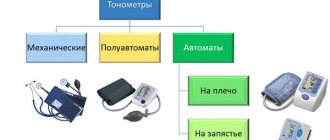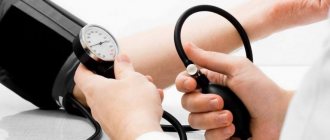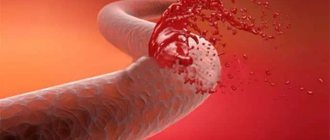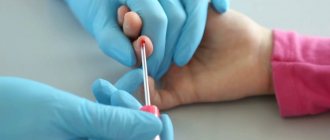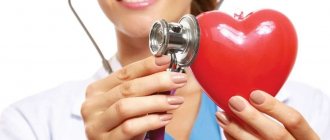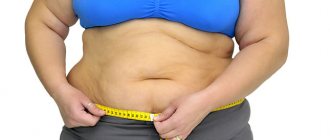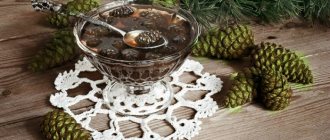Protruding veins on the legs: reasons, photos
We figured out why the veins protrude on the legs. But what is the cause of varicose veins? The disease can be primary or secondary. In the first case, it manifests itself in a person with a predisposition to varicose veins, in the second - as a result of an injury in which the vascular walls were damaged and blood clots formed.
The following causes of pathology are distinguished:
- Heredity. If a person’s relatives suffered from varicose veins, he is also at risk. In this case, you need to be prepared for the onset of the disease and pay attention to prevention before the first symptoms appear.
- Sedentary work. Varicose veins threaten drivers, pilots, office workers, as well as those who stand at work for a long time (hairdressers, salesmen, etc.).
- Heavy physical activity and professional sports.
Heavy physical activity is one of the causes of vein pathology
- Completeness. Most often, varicose veins are observed in overweight people, since their weight puts pressure on the vessels in the legs and complicates blood circulation in the extremities. In addition, obese people tend to exercise less.
- Drinking alcohol, smoking, unhealthy diet. Such habits disrupt metabolism and cause vein diseases.
- The disease is also common in pregnant women. Most of them complain about this problem in the second trimester of pregnancy. The fact is that as the child grows, the pressure on the limbs and veins also increases.
- Uncomfortable shoes and clothes. The disease can provoke an addiction to high-heeled shoes and tight underwear.
The main cause of varicose veins is heredity!
The main cause of varicose veins is a hereditary factor
It should be noted that man is the only creature on Earth that has the ability to move in an upright position, therefore, the load on the legs in this situation is maximum. It is important to remember that a modern sedentary lifestyle – “office work” – also leads to venous stagnation in the lower extremities. Pregnancy and childbirth (especially repeated ones) often become a trigger in the development of varicose veins of the lower extremities. It must be taken into account that a moderate amount of physical activity throughout the day is necessary for the normal functioning of all organs and systems of the body, and this is especially important in relation to the cardiovascular system, which includes the veins. Dynamic activity forces the muscle pump of the calf muscles to work, which in turn leads to increased outflow of stagnant venous blood from the lower extremities.
What to do if veins protrude on your legs
If you notice that the veins on the back or sides of your legs are protruding strongly, consult a doctor immediately. Some people don't know which doctor to see, so they put off treatment. A phlebologist deals with venous diseases, but first, in any case, you can consult a therapist.
Expert opinion
Despite the fact that varicose veins have characteristic signs, which are usually sufficient to diagnose the presence of pathology, it is recommended to undergo additional diagnostics to make an accurate diagnosis and determine the extent of the lesions. Most often it includes ultrasound of the veins of the lower extremities.
Vascular surgeon, phlebologist
Osipova Ekaterina Yakovlevna
Such symptoms indicate a serious stage of the disease, at which preventive measures are no longer sufficient. Treatment at this stage includes taking medications and vitamins, using external agents (creams, ointments), as well as medical procedures and gymnastics.
The late stage of the disease is very dangerous, as it entails serious complications: for example, thrombophlebitis. Therefore, in this case, you need to urgently consult a doctor.
Most patients are best helped by complex therapy, a combination of venotonic drugs with creams and ointments for external use. Regular contrast showers and light sports will also improve the condition of your limbs.
Varicose veins causes (mechanism). Risk factors for developing varicose veins:
- Staying on your feet for a long time (more than 50% of working time)
- Work involving heavy lifting (loaders, athletes)
- Overweight and obesity (increases strain on legs)
- Inactive lifestyle (“office work”)
- Pregnancy and childbirth (especially repeated ones)
- Chronic constipation (increased intra-abdominal pressure)
- Taking hormonal medications (including contraceptives)
- Private, long-haul air travel (“Economy class varicose veins”)
- Thermal loads (baths, saunas, hot baths)
- High heels (shifting the center of gravity increases the load on the legs)
Veins on the legs protrude: treatment
Treatment of this pathology can be conservative or include surgery. Sometimes two types of treatment are combined to achieve maximum effect, reduce inflammation and pain, speed up blood circulation and valve function.
Treatment of vein pathology with drugs
Treatment with medications involves the use of anticoagulants (if complications develop - thrombosis) and venotonics. Also, while taking medications, it is imperative to adjust your diet and start doing therapeutic exercises. As an additional preventative measure, all kinds of compresses for the legs, cool showers, compression garments and cream are prescribed.
Expert opinion
Also, along with drug therapy, surgical treatment of veins is used. In the first stages, laser treatment is effective, in which the laser is applied to the inner wall of the varicose vein. The wall is heated under the influence of the beam, and the patient does not feel severe pain. Thanks to laser treatment, bulging veins in the legs of men and women disappear within a few months.
Vascular surgeon, phlebologist
Osipova Ekaterina Yakovlevna
In addition, radiofrequency ablation (Ablatio) is used in surgical treatment. With this method, body tissues are exposed to radio frequency frequencies. The varicose vein is punctured and a waveguide pre-connected to a radio frequency generator is inserted into it. On the computer, doctors see the temperature in the vessel. Using the device, the venous walls are heated to reduce the lumen. In this case, the device affects only the walls of blood vessels, but it can only be used on large vessels.
Another common method of treating varicose veins is sclerotherapy. It is classified as a chemical method. A special medicine is injected into the enlarged lumen of the vein, which promotes its narrowing and gluing. The method is suitable for small veins, but for large veins it is not effective enough.
Edema of the lower extremities
Along with varicose veins, swelling of the legs, ankles and feet often occurs. Edema leads to the development of chronic inflammation in the distal parts of the lower extremities.
Stage III of varicose veins: swelling in the distal parts
When you experience pain, discomfort and heaviness, these are often signs of an inflammatory response. The sensation can be relieved by elevating your legs above your heart, this helps circulate blood to your heart from your legs after long periods of sitting or standing. This problem will not be solved by itself; you need to contact a phlebologist in a good specialized medical center. The best solution would be to choose one of the best Moscow city phlebological centers, where leading specialists in this field work.
Here are the leading symptoms that should prompt you to seek medical help.
Symptoms accompanying inflammation in the legs with stage III varicose veins:
- Feeling of heaviness, fullness, swelling in the calves or ankles.
- Itching in the lower extremities.
- Numbness and pastiness in the distal parts of the lower extremities.
- Aching pain when walking and standing.
- Restless legs syndrome, when it becomes difficult to maintain a static body position.
- Muscle spasms, cramps in the calf muscles (usually at night).
Many of these symptoms are among the first serious signs of venous pathology, so if you have varicose veins and swelling, it is very important to get a diagnosis so as not to make the problem worse.
Protruding veins on the legs: treatment with folk remedies
The use of folk remedies is advisable in the initial stages of the disease. Also, such procedures are used as prevention in people at risk. Many people ignore pills because of their high cost and prefer traditional medicine. Such treatment can be effective, but you should first consult a doctor and consult about the advisability of using certain methods.
Treatment of varicose veins with herbal decoctions
In folk medicine, varicose veins are treated with herbal decoctions, infusions, compresses and ointments. Decoctions and infusions are prepared for both internal and external use. Most recipes use pharmaceutical chamomile, horsetail, St. John's wort and chestnut. Active components in natural herbs, fruits and roots help restore vascular elasticity, reduce swelling and inflammation.
Some foot creams are also made based on natural ingredients. For example, the composition of the NORMAVEN® foot cream is represented by 12 natural ingredients, including plant extracts, oils and vitamins that have a venotonic effect. This product has undergone clinical trials and has proven itself well among patients and phlebologists. And the composition of the venotonic tonic "NORMAVEN®" is represented by extracts of horse chestnut, which strengthens the walls of blood vessels, extracts of witch hazel and butcher's broom, menthol and panthenol. All these active components in combination provide a powerful effect in strengthening blood vessels, relieving swelling, reducing pain and inflammation. Therefore, such products should be used by all people with sedentary work or a hereditary predisposition. Specialists from a pharmaceutical company worked on the development of NORMAVEN® tonic and cream; these products have been tested and have a package of necessary documents and certificates.
Medicinal baths
!
One of the most popular folk remedies for the treatment of varicose veins is medicinal baths.
They also help with thrombosis (Thrombosis) and thrombophlebitis (Thrombophlebitis). To prepare such a bath, you need to mix 500 g of oak, willow, and chestnut branches. Pour boiling water over the branches and cook for 30 minutes. After this, medicinal herbs are added to the solution. You will need four packs of St. John's wort, string and chamomile. The finished broth should be left overnight. In the morning, the product is added to the bath.
They also make foot baths with soda. You need to add seven tablespoons of soda to a hot bowl and steam your feet in it. In addition, you can take baths as much as possible with willow bark. To do this, you need to boil willow branches in boiling water for half an hour, and then add the decoction to the bath.

